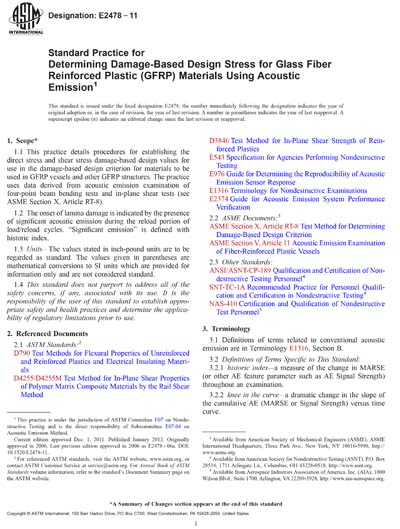Historical
ASTM E2478-11
Standard Practice for Determining Damage-Based Design Stress for Glass Fiber Reinforced Plastic (GFRP) Materials Using Acoustic Emission
The damage-based design approach will permit an additional method of design for GFRP materials. This is a very useful technique to determine the performance of different types of resins and composition of GFRP materials in order to develop a damage tolerant and reliable design. This AE-based method is not unique, other damage-sensitive evaluation methods can also be used.
This practice involves the use of acoustic emission instrumentation and examination techniques as a means of damage detection to support a destructive test, in order to derive the damage-based design stress.
This practice is not intended as a definitive predictor of long-term performance of GFRP materials (such as those used in vessels). For this reason, codes and standards require cyclic proof testing of prototypes (for example, vessels) which are not a part of this practice.
Other design methods exist and are permitted.
Content Provider
ASTM International [astm]






